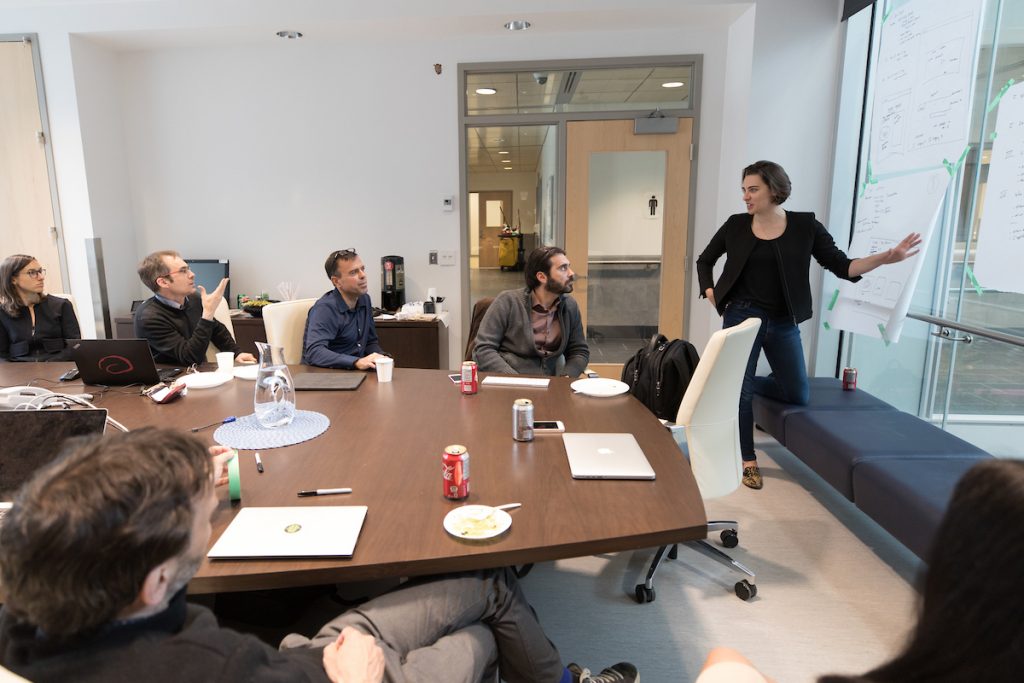Scholarly publishing loves intractable problems. Building publishing platforms is often argued to be such a thing.
I think there’s a reasonable amount of skepticism here toward any claims to have solved what has been, for decades, an intractable set of problems. We’ve watched Wiley pour (estimated) tens of millions of dollars into building a platform, only to give up and purchase Atypon. We’ve watched Elsevier pour similar (estimated) amounts of money into building Evise, only to give up and purchase Aries. We’ve watched PLOS pour similar (estimated) amounts of money into building Aperta, only to give up and sign on with Aries.
David is talking to a belief in the scholarly publishing sector that publishing workflow platforms are an intractable problem. And yet, so the belief goes, Aries and others, have apparently ‘solved’ this problem.
Well, intractable problems aren’t ones that have been previously solved. So whats going on with this argument?
I’m guessing there is a lot of unspoken stuff embedded in this position. For example, I think that some take the ‘intractable problem’ line because they are feeling threatened. Pure and simple. Threatened by the current wave of interest and optimism around open source solutions in this sector. You can see this defensiveness at play in some articles and comments on Scholarly Kitchen. It’s not too hard to spot.
But all that aside, why not just take the argument on face value. What of this apparent intractableness? Let start by admitting, Aries and other systems, have not ‘solved’ publishing workflow. None of the publishers I know that use these systems celebrate them. So maybe it is true…publishing platforms are trying to solve an intractable set of problems…since no one has solved it yet…hoho…
Well, I’d say the reality is this:
- Existing platforms are trying to solve complex publishing workflow problems
- publishing workflow is not complex
Sum the two up and its easy to see that existing publishing platforms are trying to solve the wrong problems. They are trying to solve a complex set of problems when the actual problem is actually pretty simple. This kind of defective problem-solution context has too nasty outcomes:
- bad solutions – when you make a problem unnecessarily complex you design an unnecessarily complex solution. An unnecessarily complex solution is another way of saying a bad solution.
- a broken solution culture – bad solutions confuse the people you are trying to help. If the solution becomes mainstream it results, in turn, in a dysfunctional, and self perpetuating, circle of dependency between ‘vendor’ and ‘user’ – where the ‘unduly complex problem and resulting solution’ become the normative conceptualization of ‘how things are’.. Solve a problem badly and people will want you to solve it badly for a long time. That’s culture for you.
So, the big problem really is… what is the problem we are trying solve?
Workflow, in a word. Workflow is what we are trying to solve. How to get a paper from submission to publication. All the processes that occur in between those two points is what I refer to as workflow. What needs to be done, by who, and when. Thats the crux of it – this is what workflow is, that is what publishing platforms are trying to solve.
Perhaps it’s best to start there – to understand the workflow problem so we can design the best solution for it.
You can already see that when we take this view on the problem that designing good publishing platforms already feels a little more in reach. The problem space is not solved by some kind of complex magic performed by software developers. The problem is solved by first having a good understanding of workflow. Who does what and when. That’s it. Not too tricky to get your head around.
So how do we understand workflow? Well despite my philosophy degree, I’m not always a theorist, I’m also a pragmatist. The best way to understand what a publishing workflow is, is not to come up with some handy abstractions (although I’ve also done this), it is to ask a publisher.
I do this all the time. I travel to publishers and get all the folks involved in the publishing workflow in to a room and then ask them to go through it step by step.

When all these folks are in the same room, I simply ask the group to step me through the workflow process starting at step one – author logs in to the submission system – right through to publication. I ask each step to be described in the format – who does what. The ‘when’ is looked after by the order of steps.
There are usually a few circular steps, revisions and so forth, but it can all be captured in this simple process. It takes maybe 1.5 hours or so. At the end we have a complete picture of their workflow.
Now… if you were to design a system to capture the workflow as it is described at this point you would have a bad solution. Why? Because of this broken solutions culture I spoke about above. Current publishing platforms solve the problems badly and so we currently have bad workflows.
To avoid making overly complex, bad, solutions we need to first look at better understanding the problem. Can we look at a current workflow and reduce its complexity without losing anything? Thats the first step.
How do we do this? Well… the pragmatist enters the room again…. With the same group of people we can simply ask them to walk through an ideal workflow. I do the same thing… ask them to start with step one – author logs in to a submission system – and then walk through an ideal process step by step.

What happens? Well, you would be surprised. In a few hours the same group has radically simplified their workflow without losing anything. It is, in effect, a lovely kind of lossless compression (I used to do a lot of streaming, and lossless compression is the holy grail!).
Recently, for example, I did this process with a publisher and reduced the steps from 41 to about 9. This is not uncommon.
So… as to intractable problems… imagine designing a system to encapsulate 41 steps. Now imagine designing one to solve 9.
Its not difficult to design a system for 9 steps. In fact, it’s pretty easy.
This is at the heart of the ‘intractable problem’ blah blah. Its just blah blah motivated by a lot of self interest, woolly thinking and a broken solutions culture. We have become trapped by these ideas as a sector. At the same time, publishing is itching to find a better way… however, we have (as David says) looked to see the solution as being software. The solution is not software, the solution is that we need to understand workflow better. If we can do that we can make better solutions.
